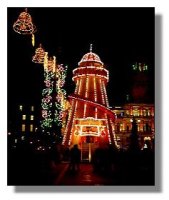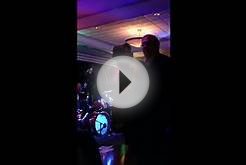Did You Know?
- New Year's Eve - Hogmanay

What does Hogmanay actually mean and what is the derivation of the name? Why do the Scots more than any other nation celebrate the New Year with such a passion? Why should a tall dark stranger be a welcome first foot visitor after midnight, carrying a lump of coal and a slice of black bun?
Read on
The Origins of Hogmanay
A guid New Year to ane an` a` and mony may ye see!While New Year's Eve is celebrated around the world, the Scots have a long rich heritage associated with this event - and have their own name for it, Hogmanay.
There are many theories about the derivation of the word "Hogmanay". The Scandinavian word for the feast preceding Yule was "Hoggo-nott" while the Flemish words (many have come into Scots) "hoog min dag" means "great love day". Hogmanay could also be traced back to the Anglo-Saxon, Haleg monath, Holy Month, or the Gaelic, oge maidne, new morning. But the most likely source seems to be the French. "Homme est né" or "Man is born" while in France the last day of the year when gifts were exchanged was "aguillaneuf" while in Normandy presents given at that time were "hoguignetes". Take your pick!
In Scotland a similar practice to that in Normandy was recorded, rather disapprovingly, by the Church.
"It is ordinary among some Plebians in the South of Scotland, to go about from door to door upon New Year`s Eve, crying Hagmane."Scotch Presbyterian Eloquence, 1693.
Hogmanay Traditional Celebrations
Historians believe that we inherited the celebration from the Vikings who, coming from even further north than ourselves, paid even more attention to the passing of the shortest day. In Shetland, where the Viking influence was strongest, New Year is called Yules, from the Scandinavian word.
It may not be widely known but Christmas> was not celebrated as a festival and virtually banned in Scotland for around 400 years, from the end of the 17th century to the 1950s. The reason for this has its roots in the Protestant Reformation when the Kirk portrayed Christmas as a Popish or Catholic feast and therefore had to be banned. Many Scots had to work over Christmas and their winter solstice holiday was therefore at New Year when family and friends gathered for a party and exchange presents, especially for the children, which came to be called hogmanay.
There are traditions before midnight such as cleaning the house on 31st December (including taking out the ashes from the fire in the days when coal fires were common). There is also the superstition to clear all your debts before "the bells" at midnight.
"Should auld acquaintance be forgot and never brought to mind?
Should auld acquaintance be forgot and auld lang syne
For auld lang syne, my dear, for auld lang syne,
We'll take a cup o kindness yet, for auld lang syne."
An integral part of the Hogmanay partying, which continues very much today, is to welcome friends and strangers, with warm hospitality to wish everyone a Guid New Year. The underlying belief is to clear out the vestiges of the old year, have a clean break and welcome in a young, New Year on a happy note.
"First footing" (that is, the "first foot" in the house after midnight) is not as common as it used to be in Scotland. To ensure good luck for the house, the first foot should be male, dark (believed to be a throwback to the Viking days when blond strangers arriving on your doorstep meant trouble) and should bring symbolic coal, shortbread, salt, black bun and whisky. These days, however, whisky and perhaps shortbread are the only items still prevalent (and available).
"Handselling" was the custom of gift giving on the first Monday of the New Year but this has died out.
Torch and Bonfire Ceremonies
The magical Firework display and torchlight procession in Edinburgh - and throughout many cities in Scotland - is reminiscent of the ancient custom at Scottish Hogmanay pagan parties hundreds of years ago.
The traditional New Year ceremony of yesteryear would involve people dressing up in the hides of cattle and running around the village being hit by sticks. The festivities would also include the lighting of bonfires, rolling blazing tar barrels down the hill and tossing torches. Animal hide was also wrapped around sticks and ignited which produced a smoke that was believed to be very effective to ward off evil spirits. The smoking stick was also known as a Hogmanay.











